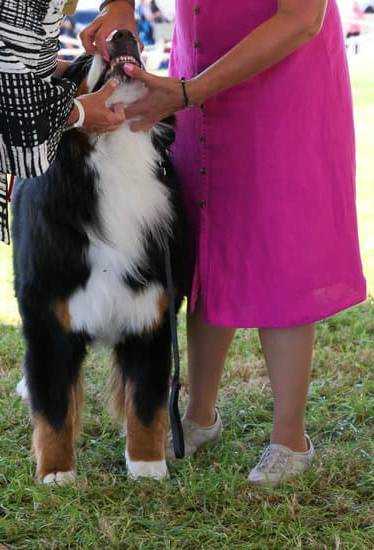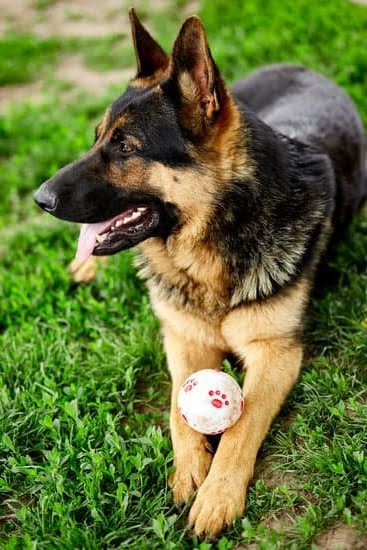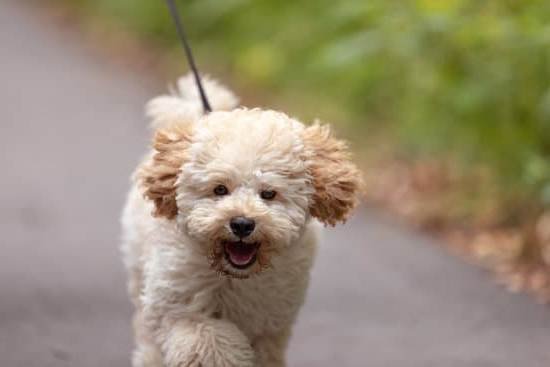Potty training a dog is an essential part of pet ownership, and it is important to start at the right age to ensure success. Determining what age to potty train a dog can be influenced by several factors, and understanding these considerations can make the process smoother for both the owner and the pet. This article will explore the various aspects of potty training, from identifying the right age to recognizing signs of readiness in your furry friend.
As a responsible dog owner, potty training is crucial not just for maintaining a clean living space, but also for building a strong bond with your canine companion. Starting at the appropriate age and being aware of your dog’s readiness plays a significant role in setting them up for success in this aspect. Additionally, choosing the correct method for training and avoiding common mistakes are vital components in achieving effective results.
In this comprehensive guide, we will delve into how to identify when your dog is ready for potty training, as well as explore different approaches such as crate training. Not only that, but we will also provide tips for successful potty training and offer advice on how to handle setbacks along the way.
By understanding the importance of potty training and following these guidelines, you can set your dog up for success and enjoy the benefits of having a well-trained pet.
The Right Age to Start Potty Training a Dog
Potty training is an essential part of raising a well-behaved and disciplined dog. One of the most common questions among new dog owners is when to start potty training their furry friend. There is no one-size-fits-all answer, as the right age to start potty training depends on various factors.
The breed of the dog plays a significant role in determining the right age to start potty training. Smaller breeds tend to have smaller bladders and may need to go outside more frequently, so starting potty training at around 12-16 weeks old is recommended. Larger breeds, on the other hand, have better bladder control and can hold it for longer periods, so they can start their potty training at around 16-20 weeks old.
Another factor to consider is the individual development of the dog. Some dogs may show signs of readiness for potty training earlier than others. It’s essential to observe your dog’s behavior and look for cues that indicate they are ready to begin their potty training journey.
It’s also crucial to take into account your own availability and commitment when deciding the right age to start potty training your dog. Potty training requires time, patience, and consistency, so make sure you can dedicate yourself to the process before embarking on this important endeavor.
| Factors | Recommended Age |
|---|---|
| Smaller Breeds | 12-16 weeks old |
| Larger Breeds | 16-20 weeks old |
Signs That Your Dog Is Ready for Potty Training
Before starting the potty training process, it’s important to look for signs that your dog is ready. One of the most obvious signs is when your dog starts to show signs of awareness when they need to go potty. This can include sniffing around, circling a certain spot, or suddenly becoming restless. Additionally, if your dog starts whining or scratching at the door to go outside, it may be a sign that they are ready to start learning.
Another important sign that your dog is ready for potty training is their ability to hold their bladder for longer periods of time. If you notice that accidents are becoming less frequent and your dog can wait longer between bathroom breaks, then they may be ready to start the training process.
It’s also crucial to observe your dog’s behavior after they have had an accident; if they show signs of guilt or shame, it means they are aware of what they have done and could be ready for potty training.
Lastly, if you notice that your dog begins to develop a routine and goes to the bathroom around the same times each day, this could indicate readiness for potty training. Dogs thrive on routines and schedules, so if you can predict when they need to go out, it may be an indication that they are ready for training.
By paying attention to these signs and being patient with your furry friend, you’ll be well on your way to successful potty training.
Choosing the Right Method for Potty Training
When it comes to potty training your dog, there are a few different methods that you can use. The right method for your dog will depend on their personality, breed, and your own lifestyle. It’s important to choose a method that will be effective and comfortable for both you and your furry friend.
Positive Reinforcement
One of the most popular and effective methods for potty training a dog is positive reinforcement. This involves rewarding your dog with praise, treats, or affection when they exhibit good behavior such as going to the bathroom in the right spot. Positive reinforcement helps to create a positive association with potty training and encourages your dog to continue exhibiting good behavior.
Potty Pads
Potty pads can be a useful tool for potty training, especially if you live in an apartment or have limited outdoor space. Potty pads are absorbent pads that can be placed indoors as a designated bathroom area for your dog. Some dogs may prefer this method, while others may become confused about where they are supposed to go to the bathroom.
Bell Training
Bell training is another method that some dog owners find success with. This involves hanging a bell by the door that leads outside and teaching your dog to ring it when they need to go out. This method requires patience and consistency but can be effective for teaching your dog to communicate their bathroom needs.
Ultimately, the right method for potty training your dog will depend on their individual needs and preferences. It’s important to be patient, consistent, and understanding throughout the potty training process in order to set both you and your furry friend up for success.
Crate Training as a Tool for Potty Training
When it comes to potty training a dog, using a crate can be a useful tool in the process. Crate training helps to establish a routine for your furry friend and create boundaries within the home. Here are some key points to consider when using crate training as a tool for potty training:
- Introducing the crate: Start by introducing your dog to the crate gradually. Make it a positive experience by placing treats or their favorite toys inside and allowing them to explore at their own pace.
- Establishing a routine: Use the crate to establish a routine for potty breaks. Take your dog outside to relieve themselves first thing in the morning, after meals, before bedtime, and at regular intervals throughout the day.
- Avoid using the crate as punishment: It’s important to associate the crate with positive experiences. Avoid using it as a form of punishment, as this can create negative associations with the crate and hinder the potty training process.
Using a crate as a tool for potty training can help prevent accidents in the home and encourage your dog to develop good bathroom habits. When used correctly, it can also provide your pet with a sense of security and comfort in their own space. However, it’s important to remember that every dog is unique, so be patient and consistent in your approach to crate training for potty training success.
Common Mistakes to Avoid When Potty Training a Dog
Skipping Consistency
One of the most common mistakes to avoid when potty training a dog is inconsistency. Dogs thrive on routine, so it’s important to be consistent with the times you take your dog outside to relieve themselves. If you’re not consistent, your dog may become confused and have a harder time learning where they are supposed to go potty.
Punishing Accidents
Another mistake to avoid is punishing your dog for accidents. Punishment can create fear and anxiety in your pet, making potty training even more challenging. Instead of punishment, focus on positive reinforcement when your dog goes potty in the right place. Use treats, praise, and rewards to encourage good behavior.
Not Supervising Your Dog
Lastly, failing to supervise your dog can lead to accidents and hinder the potty training process. Keeping an eye on your dog allows you to catch any signs that they need to go outside. It also prevents them from sneaking off to go potty in the house without you noticing. Supervision is crucial, especially during the early stages of potty training.
By avoiding these common mistakes, you can set yourself and your furry friend up for success in the potty training process. Remember that patience and consistency are key when it comes to effectively teaching your dog where it’s appropriate to relieve themselves. With the right approach and mindset, you can overcome these obstacles and achieve a successfully potty trained pooch.
Tips for Successful Potty Training
Potty training is a crucial part of raising a well-behaved and disciplined dog. It not only helps in maintaining cleanliness at home but also establishes a healthy routine for your pet. Here are some tips for successful potty training:
1. **Consistency is Key:** Consistency is crucial when potty training your dog. Take your dog out to the designated potty area regularly, especially after meals, playtime, and waking up from naps. This will help them understand when and where they should relieve themselves.
2. **Positive Reinforcement:** Use positive reinforcement such as treats, praise, or even playtime to reward your dog when they successfully go to the bathroom in the right spot. This will encourage them to repeat this behavior in the future.
3. **Establish a Routine:** Dogs thrive on routine, so establishing a consistent schedule for their meals and bathroom breaks can greatly aid in potty training. By following a routine, your dog will learn when to expect bathroom breaks and reduce accidents inside the house.
4. **Patience and Understanding:** Potty training can be challenging, so it’s important to be patient with your dog throughout the process. Understand that accidents will happen and avoid punishing or scolding them for mistakes.
By following these tips, you can set yourself and your furry friend up for success in their potty training journey. Remember that every dog is different, so it’s important to be adaptable and patient as you work towards achieving a fully potty trained pup.
Dealing With Setbacks in Potty Training
Potty training a dog can be a challenging process, and setbacks are bound to happen. It’s important for pet owners to understand that setbacks are normal and part of the learning process for dogs. One common setback is when a previously potty-trained dog starts having accidents in the house again. This can be frustrating, but it’s important to stay patient and not get discouraged.
One of the most common causes of setbacks in potty training is a change in the dog’s routine or environment. Moving to a new home, changes in schedule, or even something as simple as rearranging furniture can confuse a dog and lead to accidents. Additionally, health issues or aging can also contribute to setbacks in potty training. Understanding these factors can help pet owners address setbacks with empathy and patience.
When faced with setbacks in potty training, it’s crucial for pet owners to remain consistent with their training methods. Going back to basics by reinforcing positive behaviors, increasing bathroom breaks, and closely monitoring the dog’s behavior can help address setbacks effectively. It’s also essential to rule out any underlying health issues by consulting a veterinarian. By staying patient and consistent, pet owners can overcome setbacks and continue the potty training process with success.
Conclusion
In conclusion, potty training a dog is a crucial aspect of responsible pet ownership. By understanding the right age to begin, recognizing the signs of readiness, and choosing the appropriate training method, pet owners can successfully achieve a potty trained dog. It is important to celebrate the success of this accomplishment, as it not only benefits the dog but also makes for a cleaner and more harmonious home environment.
Successfully potty training a dog requires patience, consistency, and dedication. It is essential for pet owners to be attentive to their dog’s behavior, provide positive reinforcement, and avoid common mistakes such as punishment or inconsistency. By utilizing crate training as an effective tool and following helpful tips for successful potty training, pet owners can ensure that their dog develops good bathroom habits.
Ultimately, having a potty trained dog brings about numerous benefits. It fosters a closer bond between the pet owner and the dog, creates a more hygienic living space, and allows for greater freedom for both the pet and its owner.
While setbacks are natural in the process of potty training a dog, with perseverance and proper guidance these challenges can be overcome. Therefore, by committing to the process of potty training and celebrating its success, pet owners can enjoy all of these advantages with their well-behaved canine companion.
Frequently Asked Questions
Can an 8 Week Old Puppy Be Potty Trained?
Yes, it is possible to potty train an 8-week-old puppy. While it may take more time and patience compared to older dogs, starting the training process early can help establish good habits and minimize accidents in the future. Consistency, positive reinforcement, and frequent potty breaks are key components of successfully potty training a young puppy.
At What Age Are Dogs Easiest to Potty Train?
Dogs are typically easiest to potty train between the ages of 12 to 16 weeks. At this stage, they are more physically capable of controlling their bladder and bowel movements, making it easier for them to understand and learn what is expected of them during potty training.
It’s important to start the training process during this crucial developmental stage to set the foundation for good bathroom habits.
What Is the Best Age to Potty Train a Puppy?
The best age to potty train a puppy is generally between 12 to 16 weeks old. During this stage, puppies have better bladder control and cognitive abilities, which makes them more receptive to learning proper potty etiquette.
Starting the training process at this age can help prevent behavioral issues related to house soiling and make the overall training experience more successful for both the puppy and its owner.

Welcome to the blog! I am a professional dog trainer and have been working with dogs for many years. In this blog, I will be discussing various topics related to dog training, including tips, tricks, and advice. I hope you find this information helpful and informative. Thanks for reading!





